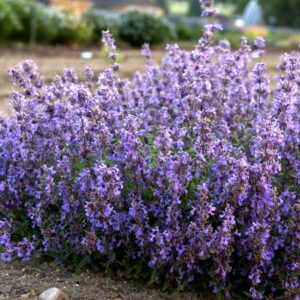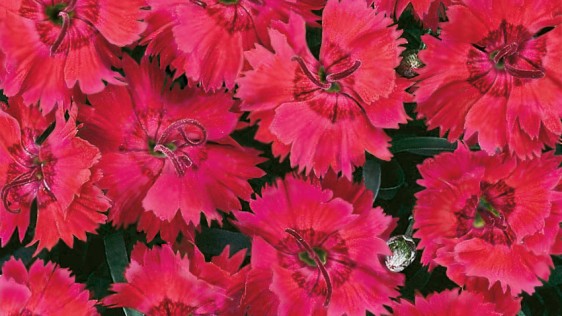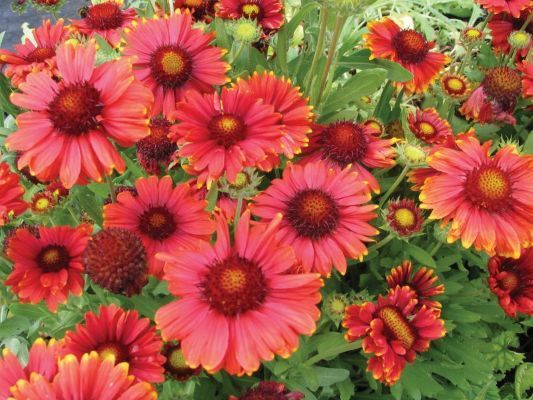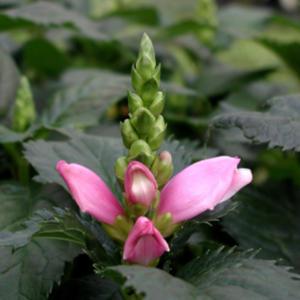Description
 Nepeta faassenii ‘Purrsian Blue’
Nepeta faassenii ‘Purrsian Blue’
Dwarf Catmint
USDA Zone: 3-9
This selection is similar to C. ‘Cat′s Meow’ in that it has a tidy habit but in year two doubles its spread while only reaching 45cm (18 inches) tall. It features green leaves that are highly aromatic when crushed or bruised so an excellent addition planted along a garden path. Small periwinkle blue flowers are densely clustered and bloom from early summer to early fall. Shear back the initial flower spikes for continuous bloom. Attractive to our feline friends. USPP#24788: unlicensed propagation prohibited.
Sun Exposure Full Sun or Full Sun or
Soil Type Normal or Sandy or Clay
Soil pH Neutral or Alkaline or Acid
Soil Moisture Average or Dry or Moist
Care Level Easy
Flower Color Deep Blue
Blooming Time Early Summer Mid-Summer Late Summer Early Fall
Foliage Color Deep Green
Plant Uses & Characteristics
Alpine & Rock Attracts Butterflies
Attracts Hummingbirds Border
Containers Deer Resistant
Drought Tolerant Rabbit Resistant
Fragrant Massed
Flower Head Size Medium
Height 14-18 inches
Spread 18-29 inches
Foot Traffic None
Growth Rate Medium




Reviews
There are no reviews yet.